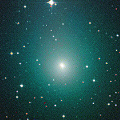
|
Now it is bright as 8.7 mag (Oct. 2, Willian Souza). It will be fading after this. In the Southern Hemisphere, it is observable in excellent condition after this. In the Northern Hemisphere, it will be unobservable in November.
Date(TT) R.A. (2000) Decl. Delta r Elong. m1 Best Time(A, h)
Oct. 19 22 5.36 -30 18.7 0.862 1.579 116 10.2 20:14 ( 0, 24)
Oct. 26 21 50.30 -35 24.9 1.054 1.619 104 10.7 19:32 ( 0, 19)
|
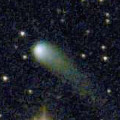
|
Now it is 12.9 mag (Oct. 2, Chris Wyatt). It is expected to brighten up to 8 mag in 2020. It stays observable in good condition for a long time in the Northern Hemisphere. In the Southern Hemisphere, it will be getting lower gradually, and it will be unobservable in early December.
Date(TT) R.A. (2000) Decl. Delta r Elong. m1 Best Time(A, h)
Oct. 19 5 39.77 31 36.4 2.367 2.981 119 11.4 3:53 ( 0, 87)
Oct. 26 5 38.49 33 32.4 2.218 2.914 125 11.1 3:24 ( 0, 88)
|

|
Now it is 11.6 mag (Oct. 4, Carlos Labordena). It stays bright as 11 mag until winter. It stays observable in good condition for a long time in the Northern Hemisphere. In the Southern Hemisphere, it locates low, and it will be unobservable in early December.
Date(TT) R.A. (2000) Decl. Delta r Elong. m1 Best Time(A, h)
Oct. 19 1 14.08 36 17.7 2.212 3.133 153 11.2 23:22 (180, 88)
Oct. 26 0 57.35 37 23.5 2.220 3.129 151 11.2 22:38 (180, 87)
|
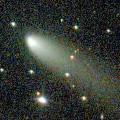
|
Now it is 11.7 mag (Oct. 5, Carlos Labordena). It stays 12 mag until November. It is observable in excellent condition in the Northern Hemisphere. It stays locating extremely low in the Southern Hemisphere.
Date(TT) R.A. (2000) Decl. Delta r Elong. m1 Best Time(A, h)
Oct. 19 2 48.40 46 41.8 0.576 1.483 139 11.8 1:02 (180, 78)
Oct. 26 2 43.66 48 32.4 0.592 1.507 142 12.0 0:30 (180, 76)
|

|
Now it is 14.6 mag (Oct. 3, Chris Wyatt).
Date(TT) R.A. (2000) Decl. Delta r Elong. m1 Best Time(A, h)
Oct. 19 0 36.71 14 59.3 4.807 5.776 165 13.1 22:46 ( 0, 70)
Oct. 26 0 33.79 14 39.6 4.838 5.777 159 13.1 22:16 ( 0, 70)
|

|
It has not been observed yet in this apparition. Now it is fainter than 21.5 mag (Aug. 4, Erwin Schwab). It was expected to brighten up to 12 mag from August to September. But actually, it must be much fainter than expected. It is observable in good condition in the Northern Hemisphere. It is not observable in the Southern Hemisphere.
Date(TT) R.A. (2000) Decl. Delta r Elong. m1 Best Time(A, h)
Oct. 19 7 9.42 53 16.4 1.075 1.602 101 13.6 4:44 (197, 71)
Oct. 26 7 21.91 54 53.5 1.072 1.643 105 14.1 4:50 (187, 70)
|
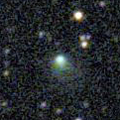
|
Now it is 14.1 mag (Oct. 18, Chris Wyatt). It is observable at 13.5 mag in good condition in autumn.
Date(TT) R.A. (2000) Decl. Delta r Elong. m1 Best Time(A, h)
Oct. 19 19 0.03 -15 26.3 1.698 1.807 79 13.8 18:45 ( 28, 35)
Oct. 26 19 16.77 -15 47.3 1.747 1.800 76 13.8 18:37 ( 29, 34)
|

|
Now it is 14.3 mag (Oct. 18, Chris Wyatt). It stays 13-14 mag for a long time in 2019. In the Southern Hemisphere, it is observable in good condition. In the Northern Hemisphere, it is not observasble until summer in 2020.
Date(TT) R.A. (2000) Decl. Delta r Elong. m1 Best Time(A, h)
Oct. 19 14 2.13 -85 52.7 3.221 3.137 76 14.2 18:45 ( 5,-35)
Oct. 26 17 10.00 -85 35.9 3.263 3.154 74 14.3 18:37 ( 4,-32)
|

|
Now it is 14.7 mag (Sept. 6, Ken-ichi Kadota). It is observable at 14 mag in good condition in autumn.
Date(TT) R.A. (2000) Decl. Delta r Elong. m1 Best Time(A, h)
Oct. 19 9 3.50 10 42.9 2.709 2.547 70 14.3 4:44 (296, 48)
Oct. 26 9 11.43 9 53.5 2.652 2.577 74 14.5 4:50 (303, 52)
|

|
It brightened up to 7.7 mag in June in 2018 (June 19, Juan Jose Gonzalez). Now it is fading. It has already faded down to 14.2 mag (Sept. 10, Thomas Lehmann). In the Southern Hemisphere, it stays observable for a long time until the comet will fade out. In the Northern Hemisphere, it is appearing in the morning sky, but it stays low for a while.
Date(TT) R.A. (2000) Decl. Delta r Elong. m1 Best Time(A, h)
Oct. 19 7 1.31 -32 54.7 4.905 5.027 91 14.7 4:44 (353, 22)
Oct. 26 6 58.59 -33 24.2 4.889 5.084 95 14.7 4:43 ( 0, 22)
|

|
Now it is 14.6 mag (Oct. 18, Chris Wyatt). In the Southern Hemisphere, it is observable for a long time. It stays low in the Northern Hemisphere.
Date(TT) R.A. (2000) Decl. Delta r Elong. m1 Best Time(A, h)
Oct. 19 23 0.22 -39 38.9 3.934 4.506 119 14.8 21:10 ( 0, 16)
Oct. 26 22 56.62 -38 18.9 4.040 4.535 113 14.9 20:39 ( 0, 17)
|

|
It brightened rapidly, and brightened up to 10.8 mag in summer (Aug. 25, Thomas Lehmann). Now it is fading. But it is still bright as 13.6 mag (Sept. 26, iTelescope Observatory, Siding Spring). In the Southern Hemisphere, it stays observable in the low sky until it becomes fainter than 18 mag in winter. It is not observable at all in the Northern Hemisphere.
Date(TT) R.A. (2000) Decl. Delta r Elong. m1 Best Time(A, h)
Oct. 19 13 42.40 -62 15.5 2.267 1.841 52 15.2 18:45 ( 34,-36)
Oct. 26 14 28.53 -62 25.3 2.371 1.900 50 15.7 18:37 ( 33,-33)
|

|
Now it is 17.6 mag (Sept. 26, Toshihiko Ikemura, Hirohisa Sato). It will brighten very rapidly, and it will brighten up to 14 mag in winter. It is observable in excellent condition in the Northern Hemisphere. It locates low in the Southern Hemisphere.
Date(TT) R.A. (2000) Decl. Delta r Elong. m1 Best Time(A, h)
Oct. 19 2 23.40 47 9.1 0.916 1.803 141 15.9 0:37 (180, 78)
Oct. 26 2 21.07 46 59.2 0.863 1.771 144 15.6 0:07 (180, 78)
|
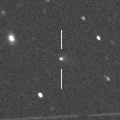
|
Now it is 16.1 mag (Sept. 25, Ken-ichi Kadota). It stays 15.5 mag until December, and it is observable in good condition.
Date(TT) R.A. (2000) Decl. Delta r Elong. m1 Best Time(A, h)
Oct. 19 23 44.25 -9 47.9 1.564 2.458 146 15.7 21:54 ( 0, 45)
Oct. 26 23 42.95 -9 49.4 1.597 2.441 139 15.7 21:25 ( 0, 45)
|

|
Now it is 17.5 mag (Sept. 3, A. C. Gilmore, P. M. Kilmartin). It is predicted to brighten up to 14 mag in winter. But actually, it is fainter than this ephemeris recently. It stays observable for a long time in the Southern Hemisphere, although it becomes low in November. In the Northern Hemisphere, it is not observable for a long time until August in 2020.
Date(TT) R.A. (2000) Decl. Delta r Elong. m1 Best Time(A, h)
Oct. 19 15 13.72 -46 44.7 3.083 2.447 42 15.8 18:45 ( 45,-19)
Oct. 26 15 20.62 -48 18.0 3.079 2.402 39 15.7 18:37 ( 45,-21)
|
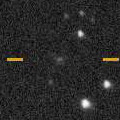
|
Now it is 15.0 mag (July 21, Taras Prystavski). It stays 16 mag for a long time from 2019 to 2020. It stays observable for a long time in the Southern Hemisphere. It is hardly observable in the Northern Hemisphere.
Date(TT) R.A. (2000) Decl. Delta r Elong. m1 Best Time(A, h)
Oct. 19 12 10.41 -67 15.2 3.869 3.466 59 15.8 4:44 (334,-30)
Oct. 26 12 20.92 -69 23.0 3.859 3.459 59 15.8 4:50 (337,-29)
|
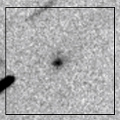
|
Now it is 16.4 mag (Oct. 4, Toshihiko Ikemura, Hirohisa Sato). The orbit is extremely hyperbolic with e=3.4. It is the first interstellar comet in history. It brightens up to 15 mag in December. In the Northern Hemisphere, it stays observable in good condition until early December. Then it will be getting lower, and it will be unobservable in mid January. In the Southern Hemisphere, it is not observable for a while. But it will appear in the morning sky in late October, then it will be observable in excellent condition.
Date(TT) R.A. (2000) Decl. Delta r Elong. m1 Best Time(A, h)
Oct. 19 9 59.53 14 59.4 2.660 2.299 58 16.2 4:44 (280, 40)
Oct. 26 10 12.24 11 16.9 2.532 2.227 61 16.0 4:50 (287, 41)
|

|
Now it is 16.0 mag (Sept. 8, Roberto Haver). It is observable at 16 mag in good condition from October to November.
Date(TT) R.A. (2000) Decl. Delta r Elong. m1 Best Time(A, h)
Oct. 19 4 42.59 13 30.2 1.699 2.492 133 16.1 2:56 ( 0, 69)
Oct. 26 4 16.60 10 49.7 1.623 2.512 146 16.1 2:03 ( 0, 66)
|
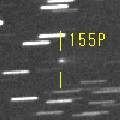
|
Now it is 16.7 mag (Oct. 9, Toshihiko Ikemura, Hirohisa Sato). It brightens rapidly, and it will be observable at 15 mag in good condition in winter. It locates somewhat low in the Southern Hemisphere.
Date(TT) R.A. (2000) Decl. Delta r Elong. m1 Best Time(A, h)
Oct. 19 8 47.13 17 56.6 1.796 1.826 75 16.3 4:44 (291, 55)
Oct. 26 9 4.55 17 11.9 1.730 1.815 78 16.1 4:50 (296, 58)
|

|
Now it is 16.0 mag (Oct. 4, Toshihiko Ikemura, Hirohisa Sato). It is observable at 16 mag in good condition from summer to autumn. It locates somewhat low in the Southern Hemisphere.
Date(TT) R.A. (2000) Decl. Delta r Elong. m1 Best Time(A, h)
Oct. 19 3 44.96 29 15.8 1.343 2.224 143 16.1 1:58 ( 0, 84)
Oct. 26 3 40.95 29 6.1 1.324 2.246 150 16.2 1:27 ( 0, 84)
|
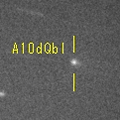
|
Now it is 16.3 mag (Sept. 30, Hirohisa Sato). It stays observable in good condition while the comet will be fading slowly after this.
Date(TT) R.A. (2000) Decl. Delta r Elong. m1 Best Time(A, h)
Oct. 19 3 31.88 1 30.9 1.555 2.465 149 16.2 1:45 ( 0, 57)
Oct. 26 3 29.19 0 30.9 1.575 2.511 154 16.4 1:15 ( 0, 56)
|
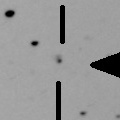
|
It looks cometary on the LCO (CTIO) image on Aug. 21. Now it is 16.2 mag (Oct. 2, ATLAS-MLO, Mauna Loa). It is observable in excellent condition in the Southern Hemisphere. In the Northern Hemisphere, it locates extremely low for a while.
Date(TT) R.A. (2000) Decl. Delta r Elong. m1 Best Time(A, h)
Oct. 19 19 50.65 -39 29.6 6.393 6.422 87 16.3 18:45 ( 9, 15)
Oct. 26 19 48.29 -38 53.5 6.517 6.425 80 16.3 18:37 ( 13, 15)
|

|
Now it is 15.8 mag (Oct. 5, Toshihiko Ikemura, Hirohisa Sato). It stays 15-16 mag for a long time until 2021.
Date(TT) R.A. (2000) Decl. Delta r Elong. m1 Best Time(A, h)
Oct. 19 20 4.10 -26 50.1 4.737 4.883 92 16.3 18:45 ( 8, 28)
Oct. 26 20 2.35 -25 53.1 4.839 4.861 85 16.3 18:37 ( 13, 28)
|

|
Now it is 16.2 mag (Oct. 4, Toshihiko Ikemura, Hirohisa Sato). It is expected to be observable at 5-6 mag for a long time from 2022 to 2023. In the Northern Hemisphere, it is not observable at the high light from 2022 summer to 2023 summer. In the Southern Hemisphere, it stays unobservable for a while. But it will be observable in good condition at the high light.
Date(TT) R.A. (2000) Decl. Delta r Elong. m1 Best Time(A, h)
Oct. 19 17 13.62 49 4.9 10.825 10.629 76 16.4 18:45 (127, 51)
Oct. 26 17 16.09 48 28.6 10.802 10.581 74 16.4 18:37 (126, 48)
|
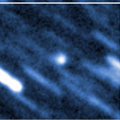
|
Now it is 15.1 mag (Oct. 5, Toshihiko Ikemura, Hirohisa Sato). It is brighter than this ephemeris recently. It stays at 15-16 mag until December. It is observable in good condition in the Southern Hemisphere. It locates somewhat low in the Northern Hemisphere.
Date(TT) R.A. (2000) Decl. Delta r Elong. m1 Best Time(A, h)
Oct. 19 19 34.15 -24 38.1 1.606 1.834 86 16.5 18:45 ( 15, 29)
Oct. 26 19 47.70 -22 58.4 1.658 1.821 82 16.4 18:37 ( 18, 30)
|
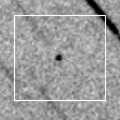
|
Now it is 16.7 mag (Aug. 9. Grorudalen Optical Observatory). It passed the perihelion on July 2. Then it must have brightened up to 13 mag, but it was not observable around that time. In the Northern Hemisphere, it stays observable in excellent condition until December when it becomes fainter than 18 mag. In the Southern Hemisphere, it stays locating low.
Date(TT) R.A. (2000) Decl. Delta r Elong. m1 Best Time(A, h)
Oct. 19 1 43.43 50 4.6 0.941 1.818 139 16.5 23:50 (180, 75)
Oct. 26 1 15.69 46 50.7 0.976 1.874 144 16.5 22:56 (180, 78)
|

|
Now it is 16.7 mag (Oct. 4, Toshihiko Ikemura, Hirohisa Sato). It will brighten up to 10.5 mag from 2020 December to 2021 January. In the Northern Hemisphere, it stays observable in good condition while the comet will be brightening gradually, but it is not observable at the high light. In the Southern Hemisphere, it is not observable for a long time, but it will be observable in good condition after the high light.
Date(TT) R.A. (2000) Decl. Delta r Elong. m1 Best Time(A, h)
Oct. 19 16 30.96 68 35.8 4.923 4.924 84 16.9 18:45 (154, 43)
Oct. 26 16 36.61 67 16.4 4.858 4.862 84 16.8 18:37 (152, 42)
|
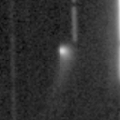
|
Now it is 17.2 mag (Oct. 5, Toshihiko Ikemura, Hirohisa Sato). It will be fading after this. In the Northern Hemisphere, it stays observable in good condition for a long time. In the Southern Hemisphere, it stays extremely low for a long time.
Date(TT) R.A. (2000) Decl. Delta r Elong. m1 Best Time(A, h)
Oct. 19 2 35.22 46 54.0 3.355 4.173 140 16.8 0:49 (180, 78)
Oct. 26 2 19.55 45 27.1 3.347 4.211 146 16.9 0:06 (180, 79)
|

|
Fading. Now it is 16.8 mag (Oct. 9, Toshihiko Ikemura, Hirohisa Sato). It stays 17 mag from autumn to winter. It is observable in good condition in the Northern Hemisphere. It locates low in the Southern Hemisphere.
Date(TT) R.A. (2000) Decl. Delta r Elong. m1 Best Time(A, h)
Oct. 19 9 20.78 24 11.4 6.582 6.315 70 16.9 4:44 (275, 52)
Oct. 26 9 20.27 24 0.7 6.505 6.358 77 16.9 4:50 (281, 59)
|

|
It stays 16-17 mag for a long time until 2020. It is observable in good condition in the Northern Hemisphere. It is hardly observable in the Southern Hemisphere.
Date(TT) R.A. (2000) Decl. Delta r Elong. m1 Best Time(A, h)
Oct. 19 12 42.25 52 27.1 8.963 8.558 63 16.9 4:44 (223, 26)
Oct. 26 12 47.88 52 10.2 8.918 8.565 66 16.9 4:50 (225, 29)
|
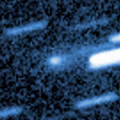
|
First return of a new periodic comet which brightened up to 16.5 mag in 2009. Now it is 16.2 mag (Sept. 11, Ken-ichi Kadota). It stays 16.5 mag until October. It is observable in good condition in the Northern Hemisphere. It locates low in the Southern Hemisphere.
Date(TT) R.A. (2000) Decl. Delta r Elong. m1 Best Time(A, h)
Oct. 19 9 24.40 12 16.4 1.459 1.384 65 16.9 4:44 (289, 45)
Oct. 26 9 41.24 10 1.9 1.459 1.422 67 17.1 4:50 (296, 47)
|

|
Fading now. Now it is 16.1 mag (Sept. 23, iTelescope Observatory, Siding Spring). In the Southern Hemisphere, it stays observable for a long time until it fades out. In the Northern Hemisphere, it will not be observable after this.
Date(TT) R.A. (2000) Decl. Delta r Elong. m1 Best Time(A, h)
Oct. 19 6 35.96 -46 28.8 5.044 5.185 92 17.0 4:44 (359, 9)
Oct. 26 6 30.76 -48 10.5 5.055 5.237 95 17.1 4:15 ( 0, 7)
|
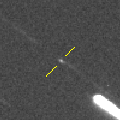
|
First return of a new periodic comet which brightened up to 18 mag in 2014. Now it is 17.3 mag (Oct. 5, Toshihiko Ikemura, Hirohisa Sato). It stays 17 mag until November. It is observable in good condition in the Northern Hemisphere. It locates extremely low in the Southern Hemisphere.
Date(TT) R.A. (2000) Decl. Delta r Elong. m1 Best Time(A, h)
Oct. 19 6 43.73 42 10.7 0.311 1.121 105 17.1 4:44 (197, 83)
Oct. 26 7 13.60 43 4.1 0.327 1.132 106 17.1 4:50 (191, 82)
|

|
Now it is 16.0 mag (Sept. 25, Toshihiko Ikemura, Hirohisa Sato). It will be fading after this, and it will be fainter than 18 mag in November.
Date(TT) R.A. (2000) Decl. Delta r Elong. m1 Best Time(A, h)
Oct. 19 23 15.38 -13 7.5 1.827 2.660 138 17.3 21:25 ( 0, 42)
Oct. 26 23 7.65 -16 25.1 1.964 2.701 128 17.5 20:49 ( 0, 38)
|

|
It approached to Earth down to 0.3 a.u. in mid February, and brightened up to 5.5 mag (Feb. 13, Juan Jose Gonzalez). Now it is fading. It has already faded down to 17.9 mag (Oct. 5, Toshihiko Ikemura, Hirohisa Sato).
Date(TT) R.A. (2000) Decl. Delta r Elong. m1 Best Time(A, h)
Oct. 19 2 31.25 41 48.0 2.683 3.549 145 17.4 0:46 (180, 83)
Oct. 26 2 12.62 40 34.3 2.716 3.620 151 17.6 23:53 (180, 84)
|
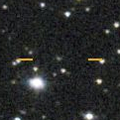
|
Now it is 17.4 mag (Oct. 4, Toshihiko Ikemura, Hirohisa Sato). It will stay at 14 mag for a long time from 2021 to 2022. In the Northern Hemisphere, it stays observable in good condition while brightening gradually, although it becomes low in December and January. In the Southern Hemisphere, it locates extremely low now, and it will be unobservable soon.
Date(TT) R.A. (2000) Decl. Delta r Elong. m1 Best Time(A, h)
Oct. 19 18 21.99 38 35.8 7.498 7.436 82 17.4 18:45 (108, 63)
Oct. 26 18 22.94 37 29.7 7.522 7.400 79 17.4 18:37 (106, 59)
|
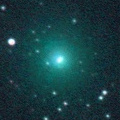
|
It brightened up to 11 mag in late 2018. Now it is 17.9 mag (Oct. 5, Toshihiko Ikemura, Hirohisa Sato). It will be fainter than 18 mag in November. It is observable in excellent condition in the Northern Hemisphere. It locates extremely low in the Southern Hemisphere.
Date(TT) R.A. (2000) Decl. Delta r Elong. m1 Best Time(A, h)
Oct. 19 3 30.89 47 24.7 3.340 4.103 134 17.5 1:45 (180, 77)
Oct. 26 3 22.81 46 32.5 3.343 4.167 141 17.6 1:09 (180, 78)
|

|
Now it is 17.6 mag (Sept. 26, Toshihiko Ikemura, Hirohisa Sato). It will brighten up to 12 mag in winter in 2022.
Date(TT) R.A. (2000) Decl. Delta r Elong. m1 Best Time(A, h)
Oct. 19 22 4.38 45 45.9 7.035 7.622 122 17.6 20:14 (180, 79)
Oct. 26 22 2.78 45 14.1 7.028 7.577 120 17.5 19:45 (180, 80)
|

|
Now it is 18.8 mag (Sept. 27, M. Jaeger, E. Prosperi, S. Prosperi). It is fainter than this ephemeris recently.
Date(TT) R.A. (2000) Decl. Delta r Elong. m1 Best Time(A, h)
Oct. 19 2 40.29 10 17.1 3.216 4.181 163 17.6 0:54 ( 0, 65)
Oct. 26 2 35.65 10 2.2 3.209 4.194 170 17.6 0:22 ( 0, 65)
|
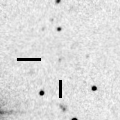
|
Now it is 17.9 mag (Oct. 8, ATLAS-MLO, Mauna Loa). It is observable at 17-18 mag for a long time from late 2019 to early 2021.
Date(TT) R.A. (2000) Decl. Delta r Elong. m1 Best Time(A, h)
Oct. 19 3 24.46 1 23.2 4.334 5.228 151 17.7 1:38 ( 0, 56)
Oct. 26 3 21.36 1 8.3 4.285 5.214 156 17.6 1:07 ( 0, 56)
|

|
Now it is 18.9 mag (Oct. 3, Observatoire Chante-Perdrix, Dauban). It will approaches to Earth down to 0.09 a.u. in early January. It will be obesrvable in excellent condition in the Northern Hemisphere. If it is as bright as in 2003, it will be 17.5 mag at best. But actually, it is brighter recently than in 2003. If it shows cometary activity, it may brighten up to 13.5 mag. In the Southern Hemisphere, it will not be observable at the high light.
Date(TT) R.A. (2000) Decl. Delta r Elong. m1 Best Time(A, h)
Oct. 19 22 38.04 -25 0.7 0.438 1.298 125 18.0 20:47 ( 0, 30)
Oct. 26 22 30.00 -24 51.2 0.415 1.239 116 17.7 20:12 ( 0, 30)
|

|
Now it is 18.0 mag (Oct. 9, Toshihiko Ikemura, Hirohisa Sato). It was exptected to brighten up to 16.5 mag from October to December. But actually, it is fainter than originally expected. It seems to brighten up to 18 mag at best. It is observable in good condition in the Northern Hemisphere. It locates low in the Southern Hemisphere.
Date(TT) R.A. (2000) Decl. Delta r Elong. m1 Best Time(A, h)
Oct. 19 8 1.09 17 51.0 1.325 1.606 86 18.1 4:44 (305, 64)
Oct. 26 8 18.45 19 35.7 1.266 1.605 89 18.0 4:50 (309, 68)
|

|
Now it is bright as 17.9 mag (Aug. 23, Hidetaka Sato). Hidetaka Sato reported it looks cometary with coma. It will be getting lower gradually after this.
Date(TT) R.A. (2000) Decl. Delta r Elong. m1 Best Time(A, h)
Oct. 19 18 12.37 -12 52.9 4.874 4.602 68 19.9 18:45 ( 42, 31)
Oct. 26 18 17.67 -13 5.4 4.967 4.600 62 19.9 18:37 ( 45, 29)
|
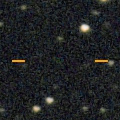
|
Now it is very faint as 19.8 mag (Sept. 25, Toshihiko Ikemura, Hirohisa Sato). It brightened up to 15.5 mag in 1997, and 17 mag in 2008, however, it is much fainter in this apparition.
Date(TT) R.A. (2000) Decl. Delta r Elong. m1 Best Time(A, h)
Oct. 19 1 18.80 17 41.8 2.339 3.328 171 20.1 23:28 ( 0, 73)
Oct. 26 1 15.06 16 55.4 2.353 3.333 168 20.1 22:57 ( 0, 72)
|
|
![]()
 68P/Klemola
68P/Klemola C/2018 A6 ( Gibbs )
C/2018 A6 ( Gibbs ) 78P/Gehrels 2
78P/Gehrels 2 C/2016 M1 ( PanSTARRS )
C/2016 M1 ( PanSTARRS ) C/2017 B3 ( LINEAR )
C/2017 B3 ( LINEAR ) C/2019 A9 ( PanSTARRS )
C/2019 A9 ( PanSTARRS ) 114P/Wiseman-Skiff
114P/Wiseman-Skiff 101P/Chernykh
101P/Chernykh C/2019 K1 ( ATLAS )
C/2019 K1 ( ATLAS ) C/2018 F4 ( PanSTARRS )
C/2018 F4 ( PanSTARRS ) 2I/2019 Q4 ( Borisov )
2I/2019 Q4 ( Borisov ) C/2018 DO4 ( Lemmon )
C/2018 DO4 ( Lemmon ) 155P/Shoemaker 3
155P/Shoemaker 3 261P/Larson
261P/Larson C/2019 K5 ( Young )
C/2019 K5 ( Young ) A/2017 U7
A/2017 U7 C/2019 K7 ( Smith )
C/2019 K7 ( Smith ) C/2017 K2 ( PanSTARRS )
C/2017 K2 ( PanSTARRS ) 160P/LINEAR
160P/LINEAR (3200) Phaethon
(3200) Phaethon C/2019 N1 ( ATLAS )
C/2019 N1 ( ATLAS ) C/2018 A3 ( ATLAS )
C/2018 A3 ( ATLAS ) C/2015 O1 ( PanSTARRS )
C/2015 O1 ( PanSTARRS ) C/2010 U3 ( Boattini )
C/2010 U3 ( Boattini ) 387P/2019 R1 ( Boattini )
387P/2019 R1 ( Boattini ) C/2016 N6 ( PanSTARRS )
C/2016 N6 ( PanSTARRS ) 384P/2019 O1 ( Kowalski )
384P/2019 O1 ( Kowalski ) C/2019 K4 ( Ye )
C/2019 K4 ( Ye ) C/2018 Y1 ( Iwamoto )
C/2018 Y1 ( Iwamoto ) C/2018 U1 ( Lemmon )
C/2018 U1 ( Lemmon ) C/2018 L2 ( ATLAS )
C/2018 L2 ( ATLAS ) C/2019 L3 ( ATLAS )
C/2019 L3 ( ATLAS ) 65P/Gunn
65P/Gunn 173P/Mueller 5
173P/Mueller 5 289P/Blanpain
289P/Blanpain 76P/West-Kohoutek-Ikemura
76P/West-Kohoutek-Ikemura 2019 LD2
2019 LD2 200P/Larsen
200P/Larsen![]()







































